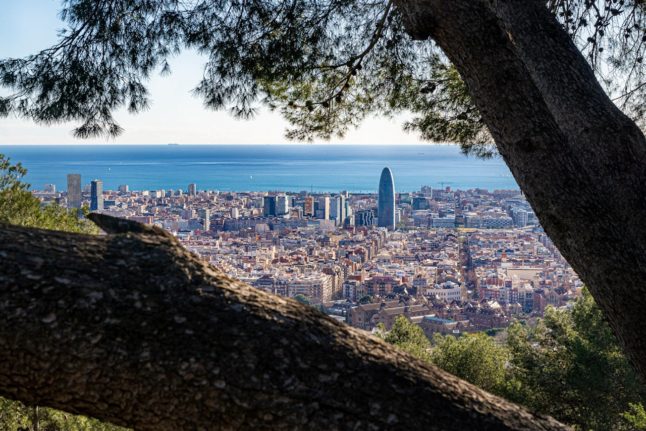It can be quite confusing for Americans who want to move to Spain as there as several different visa options available and a whole raft of requirements in order to be eligible for them.
US nationals don’t have the automatic right to get a job in Spain or anywhere else in the EU because of their status as third-country nationals within Europe’s single market, but thankfully some visas will allow you to work here.
Digital nomad visa (DNV)
Spain’s digital nomad visa was introduced at the beginning of 2023 and enables non-EU nationals like Americans to live in Spain if they have a remote job or are self-employed. It’s referred to as visado de teletrabajador de carácter internacional on most of the official websites in Spain and can be applied for either from the consulate in your home country or while here as a tourist.
You can get the visa as long as you meet a list of requirements including proof of earnings, permission from your employer to work from Spain, having held your position or worked for your client for more than three months, and that the company you work for has been in existence for more than one year. You also cannot earn more than 20 percent of your income from Spain.
READ ALSO: What are the pros and cons of Spain’s digital nomad visa?
Non-lucrative visa (NLV)
Spain’s non-lucrative visa is ideal for retirees who want to spend an extended period of time or live in Spain. It’s also great for individuals or families who want to spend a year in Spain for example. As the name suggests, you cannot work on the non-lucrative visa.
In order to be eligible you have to prove you have sufficient savings or that you earn money from passive income such as renting out your property abroad. You can also bring family members with you, but must prove you have extra funds to support them and have private health insurance.
READ ALSO: What are the pros and cons of Spain’s non-lucrative visa?
Golden visa
Spain’s golden visa, sometimes referred to as an investor visa, allows non-EU citizens such as Americans the right to live in Spain if they meet several requirements. These include buying a property worth over €500,000, investing €1 million in a Spanish company or having €1 million in a Spanish bank account.
The visa allows you to bring family members and also allows you to work. The golden visa is only valid for one year, however, you can exchange it for a residence permit, valid for a further two years once you’re in Spain.
Be aware that this type of visa may not be available for much longer. Many EU countries have already scrapped their versions of the golden visa and the Spanish government’s junior coalition partner Sumar has voiced its intention of getting rid of it here too.
READ ALSO: How Spain plans to toughen conditions for its golden visa
Student visa
In order to apply for a student visa to come and live and study in Spain, you will need to be accepted onto a course that lasts longer than three months. You also need to prove that you have sufficient funds to support yourself and that you have private health insurance. There is no age limit and you can apply either from your home country or within Spain.
The visa also allows you to work up to 30 hours a week and bring family members to live with you. Family members do not have the right to work, however, so you must prove you have extra funds to support them too.
READ ALSO: What are the pros and cons of Spain’s student visa?
Work permit as an employee (por cuenta ajena)
In order to be considered for a job as a non-EU national, in the majority of cases the position must be on Spain’s shortage occupation list.
The latest 12-page list published by Spanish employment agency SEPE is downloadable here, but overall the type of positions advertised are 95 percent in the maritime and shipping industry (from naval mechanics to ferry staff, chefs and waiters), as well as sports coaches.
In all fairness, it’s a pretty limited and disheartening list for the majority of American professionals interested in a move to Spain, but it is usually updated every quarter so there could be new positions opening.
If you have found a job offer that you’re suitable for, you must start your application from the Spanish consulate in the US or the country in which you live. You cannot for example apply while you’re here on holiday.
Work permit for English teaching or au-pair
Teaching English is a job that many anglophones in Spain take up as native teachers are very much sought after and the pay isn’t too bad either.
The most common work permit used by non-EU English speakers who have completed a TEFL or CELTA certificate (to teach English as a foreign language) is in fact the student visa, which allows them to study at a recognised institution while teaching English on the side.
There is also the ‘Auxiliares de Conversación’ Programme which is run by the Spanish government and sees people United States, Canada, New Zealand and Australia recruited to be English language assistants in Spanish schools.
In terms of au-pair work in Spain for Americans, there is a specific one-year visa they can apply for at the Spanish embassy or their closest consulate in the US. Applicants must be aged 17 to 30, and have an au pair agreement with a Spanish host family stating salary and conditions as well as proof of sufficient finances and private health cover.




 Please whitelist us to continue reading.
Please whitelist us to continue reading.
Member comments